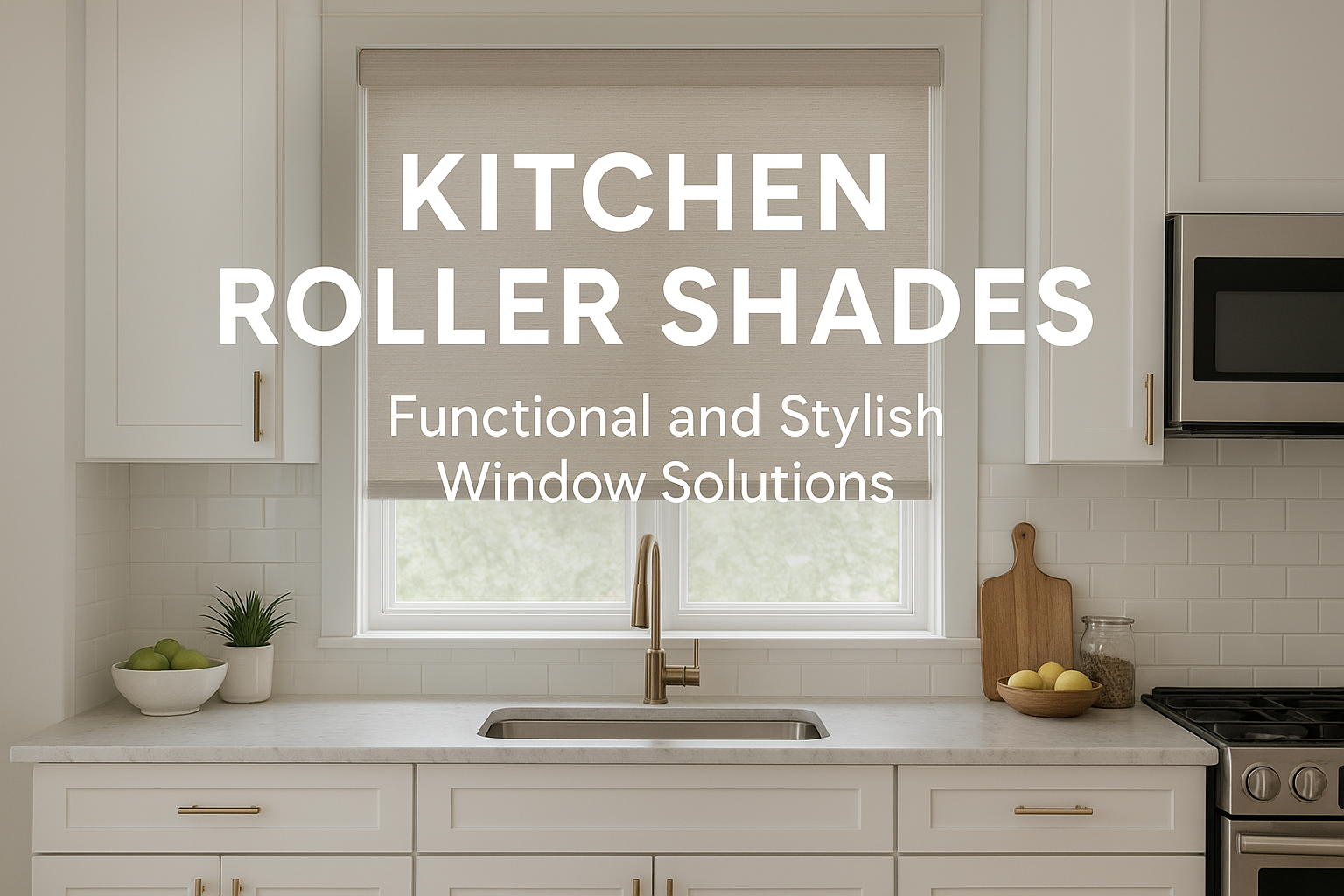Remote control blinds have become a popular choice for homeowners looking to combine convenience with modern style. With the ability to adjust your blinds with the touch of a button or through smart home integration, these innovative window treatments offer unmatched comfort and functionality. In this guide, we’ll explore everything you need to know about remote control blinds, from their benefits and types to installation tips and maintenance.
Benefits of Remote Control Blinds:
Why Make the Switch?
Remote control blinds offer a range of benefits that make them an attractive choice for modern homes. Here’s why making the switch can elevate your space:
- Convenience and Ease of Use: One of the primary benefits of remote control blinds is their convenience. With just the push of a button or a voice command, you can adjust your blinds without having to leave your seat. This is especially handy for large windows, hard-to-reach areas, or multiple rooms with blinds that need to be adjusted simultaneously.
- Enhanced Energy Efficiency: Remote control blinds can be programmed to open and close at specific times, helping you manage the amount of sunlight entering your home. This feature can reduce heating and cooling costs by controlling the temperature inside, making your home more energy-efficient.
- Increased Safety: For homes with children or pets, remote control blinds eliminate the need for dangling cords, which can pose a safety hazard. By removing cords, you create a safer environment while maintaining a sleek, modern look.
- Smart Home Integration: Modern remote control blinds often integrate with smart home systems like Amazon Alexa, Google Home, or Apple HomeKit. This allows you to sync your blinds with other smart devices, automate schedules, and control them with voice commands, adding another layer of comfort and luxury to your home.
- Aesthetic Appeal: Remote control blinds come in various styles, materials, and colors, allowing you to maintain the aesthetic of your space while enjoying their technological benefits. Whether you prefer blackout blinds for complete privacy or light-filtering options to create a cozy ambiance, there’s a remote-controlled option to match your decor.
By choosing remote control blinds, you gain a stylish and functional solution that enhances your lifestyle while adding value to your home.
Types of Remote Control Blinds:
Finding the Perfect Fit for Your Home
When selecting remote control blinds for your home, it’s important to choose the right type that matches your needs and aesthetic preferences. Here are some popular types of remote control blinds to consider:
- Roller Blinds: Remote control roller blinds are a versatile and popular choice for modern homes. They are available in a wide range of colors and fabrics, including blackout options for complete privacy and light-filtering materials for a softer ambiance. With their sleek design, they’re perfect for both contemporary and minimalist interiors. The ease of remote control adds a layer of convenience, making them suitable for large windows or hard-to-reach areas.
- Roman Shades: For those who prefer a more classic and elegant look, remote control Roman shades are an ideal option. These shades fold neatly when raised, creating soft fabric pleats that add a touch of sophistication to any room. With the motorized feature, you can control the amount of light and privacy with ease, all while maintaining the timeless appeal of Roman shades.
- Venetian Blinds: Remote control Venetian blinds feature horizontal slats that can be tilted to control light and privacy levels. Made from materials like wood, aluminum, or faux wood, these blinds offer a stylish way to enhance your windows. The motorized function allows you to adjust the slats precisely, providing flexibility in controlling the natural light entering your space while adding a refined look.
- Cellular Shades: Known for their energy efficiency, remote control cellular shades (also called honeycomb shades) are an excellent choice for homes looking to improve insulation. Their unique structure traps air in pockets, helping to maintain a comfortable temperature indoors. With the added convenience of motorization, you can adjust these shades to manage natural light while keeping your home energy-efficient.
- Sheer Shades: Remote control sheer shades combine the softness of curtains with the adjustability of blinds. They feature fabric slats suspended between two layers of sheer material, allowing for a delicate, diffused light effect. With a motorized mechanism, you can adjust the slats for varying levels of privacy and light control, making them perfect for living rooms and bedrooms where you want to maintain a bright yet private atmosphere.
Selecting the right type of remote control blinds depends on your home’s style, the level of light control you desire, and the atmosphere you want to create. Each option offers its unique benefits, allowing you to enjoy the convenience and modern appeal that comes with motorized window treatments.
How to Install Remote Control Blinds:
A Step-by-Step Guide
Installing remote control blinds can elevate the convenience and modern appeal of your home. While many models come with straightforward installation processes, it’s crucial to follow the right steps to ensure a smooth and secure fit. Here’s a step-by-step guide to help you install your remote control blinds:
1. Gather Your Tools and Materials
Before starting the installation, make sure you have all the necessary tools and materials:
- Power drill with appropriate drill bits
- Measuring tape
- Screwdriver
- Pencil or marker
- Level
- Screws and mounting brackets (often included with the blinds)
- The remote control blinds and motor unit
2. Measure Your Windows
Accurate measurements are key to a seamless fit for your remote control blinds.
- Measure the width and height of your window frame. If you plan to install the blinds inside the window recess, measure the inside dimensions. For outside mounting, measure beyond the window frame for better light coverage.
- Double-check your measurements to ensure the blinds will fit perfectly.
3. Mark the Bracket Positions
- Hold the mounting brackets at the top of the window frame or where you plan to install them.
- Use a pencil to mark the positions where the screws will go. Ensure the brackets are level to avoid crooked installation.
- For larger blinds, you may need additional brackets in the center for extra support.
4. Drill Pilot Holes and Install the Brackets
- Using a power drill, create pilot holes where you marked the bracket positions. This helps prevent the wood or wall from splitting during installation.
- Secure the brackets into place with screws using a screwdriver or the drill. Make sure the brackets are sturdy and properly aligned before proceeding.
5. Attach the Motor Unit
- Depending on your remote control blinds model, you may need to attach the motor unit to the headrail before installing the blinds. Follow the manufacturer’s instructions to ensure proper placement.
- Some motor units may come pre-attached, simplifying this step.
6. Snap or Slide the Blinds into Place
- Once the brackets and motor are in place, snap or slide the blinds into the brackets as per the instructions. Make sure they are securely attached to prevent any accidents.
- Check that the blinds can move smoothly without obstruction.
7. Test the Remote Control and Adjust Settings
- Insert the batteries into the remote control and turn on the motorized blinds.
- Test the remote to ensure that the blinds raise and lower as intended. Adjust the settings as needed, such as setting the upper and lower limits of the blinds.
- Refer to the manufacturer’s guide for troubleshooting if you encounter any issues with the motor or remote connectivity.
8. Make Final Adjustments and Enjoy Your Remote Control Blinds
- Use a level to ensure that the blinds are perfectly straight and adjust the brackets if necessary.
- Once everything is in place, step back and enjoy the ease and convenience of your new remote control blinds!
By following this step-by-step guide, you can install remote control blinds without professional help, making your home smarter and more comfortable. However, if you feel unsure at any stage, consider consulting a professional for assistance to ensure a seamless installation.
Maintaining for Long-lasting Use
Proper maintenance of remote control blinds is key to keeping them functioning smoothly and looking great for years to come. With regular care, you can ensure that the blinds operate seamlessly and the motor remains in top condition. Here’s how to maintain your remote control blinds for long-lasting use:
1. Regular Dusting and Cleaning
- Dust Weekly: Use a microfiber cloth or a soft duster to remove dust from the slats or fabric of your blinds. Dusting them weekly helps prevent buildup and keeps the blinds looking clean.
- Vacuum with a Soft Brush Attachment: For deeper cleaning, use a vacuum with a brush attachment to gently clean fabric blinds or to reach small crevices in the slats.
- Spot Cleaning: If your blinds are made of fabric, use a mild soap and water solution for spot cleaning. Avoid harsh chemicals as they can damage the material or fade colors.
2. Check the Motor and Batteries Regularly
- Inspect the Motor: Periodically check the motor for any unusual noises or signs of wear. A smoothly operating motor is crucial for the longevity of your remote control blinds.
- Replace Batteries: The remote control and motor unit often run on batteries, which need replacement from time to time. If you notice a delay in response or the blinds operating slower than usual, it might be time to replace the batteries.
- Test the Remote Signal: Make sure the remote control is sending signals properly. If it’s unresponsive, try reprogramming the remote or changing its batteries.
3. Lubricate Moving Parts
- Lubricate Tracks: To keep the blinds operating smoothly, apply a small amount of silicone-based lubricant to the tracks or hinges. This prevents the blinds from getting stuck or making noise while operating.
- Avoid Over-lubrication: Use just a little lubricant to prevent buildup, which could attract dust and dirt over time.
4. Protect from Excessive Sunlight and Moisture
- Avoid Prolonged Sun Exposure: Even though remote control blinds are designed for sun control, excessive direct sunlight can cause fabric to fade or the motor to overheat. Consider closing the blinds partially when not in use to extend their lifespan.
- Prevent Moisture Exposure: If installed in rooms like bathrooms or kitchens, ensure that moisture levels are controlled. Excessive humidity can damage the fabric and the motor. Opt for moisture-resistant materials in these areas.
5. Reprogram and Update Settings as Needed
- Adjust Settings: If your remote control blinds come with advanced features like scheduled openings or remote app control, periodically check and update these settings to match your needs.
- Reprogram After Power Outages: Sometimes, power surges or outages can disrupt the motor’s programming. Follow the manufacturer’s instructions to reprogram the blinds if they are not responding correctly after such incidents.
6. Professional Maintenance Check-Up
- While regular DIY maintenance can keep your blinds in good shape, it’s also a good idea to schedule a professional check-up every few years. A professional can ensure that the motor and mechanisms are in perfect condition and address any hidden issues that might affect long-term performance.
By following these maintenance tips, you can enjoy the convenience and style of your remote control blinds for many years. With minimal effort, your blinds will continue to operate smoothly, providing the perfect balance of light control, privacy, and modern convenience.






3 Responses
Thanks for sharing this insightful information, there is much to learn about remote-operated window shades….. 🙂
Remote-controlled blinds offer convenience, energy efficiency, safety, and smart home integration. Available in various styles, such as roller, Roman, Venetian, and cellular, they enhance your home’s aesthetic and functionality while ensuring ease of use.
Thank you for the Guide to Convenience and Style of Remote Control Blinds.